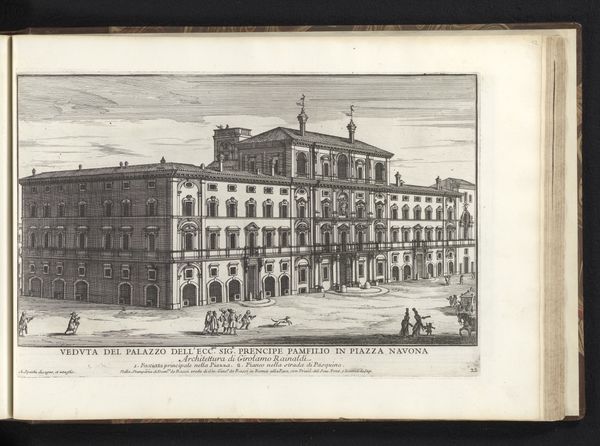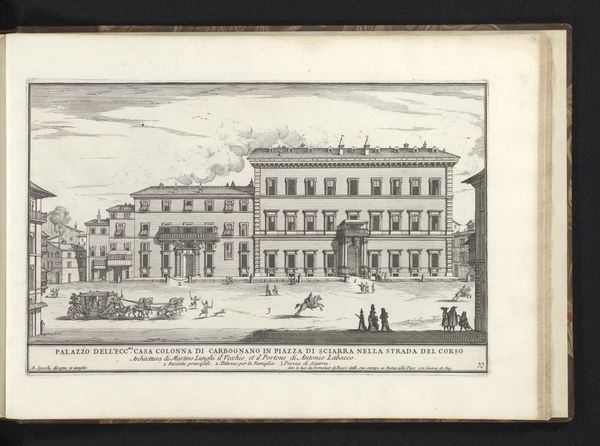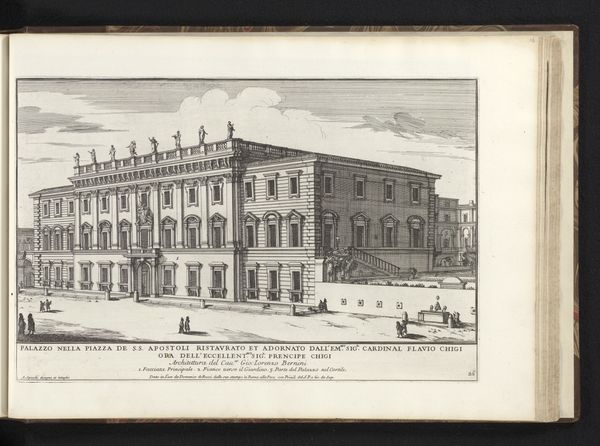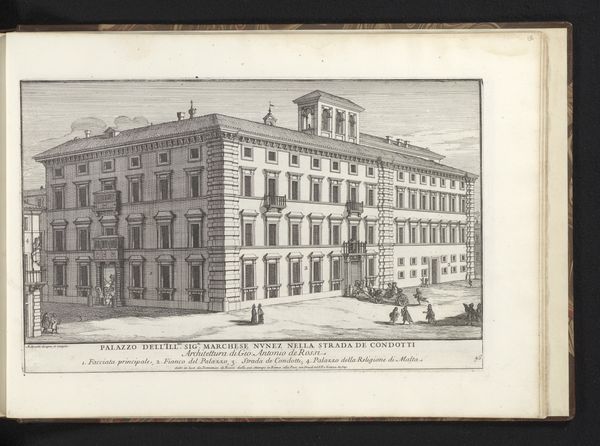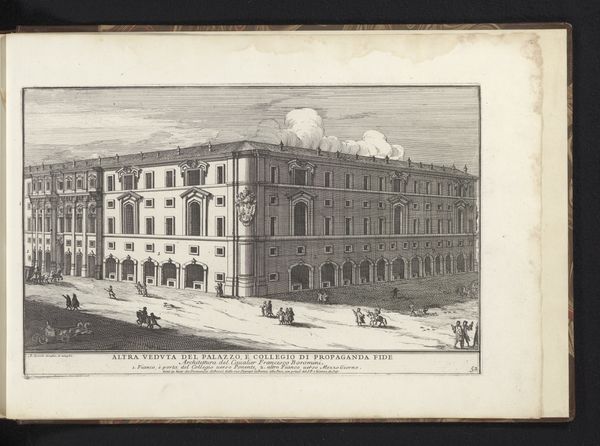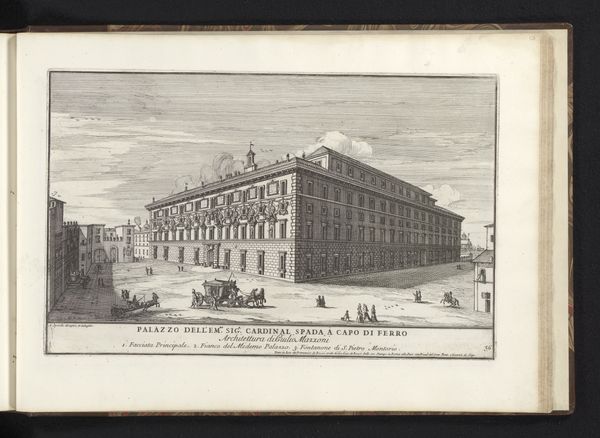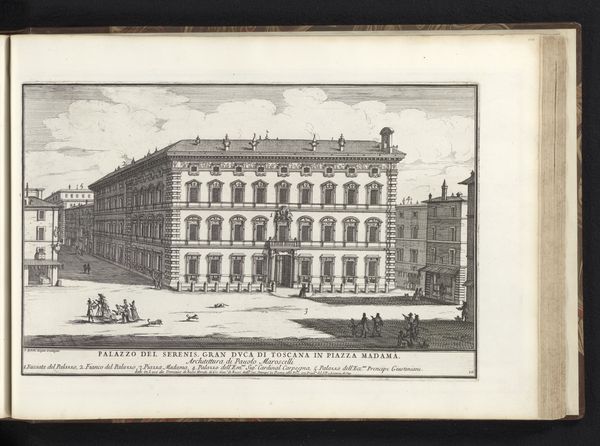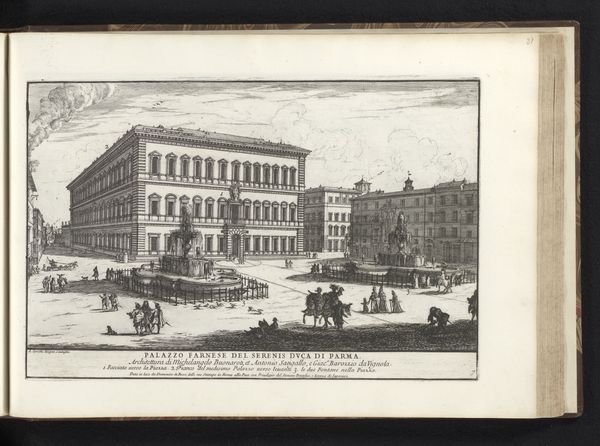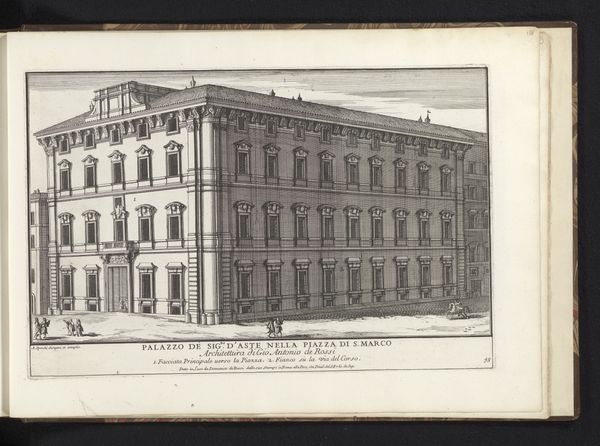
print, engraving, architecture
#
baroque
# print
#
line
#
cityscape
#
engraving
#
architecture
Dimensions: height 208 mm, width 327 mm
Copyright: Rijks Museum: Open Domain
Curator: This is Alessandro Specchi’s “Palazzo Mattei te Rome,” an engraving dating to 1699. It presents a detailed view of the Palazzo Mattei. Editor: It feels like stepping into a time capsule, doesn't it? The architecture is imposing, but the people bustling about give it this wonderful sense of lived-in reality. It's almost photographic in its detail, a snapshot of Baroque Rome. Curator: Precisely. Consider the technique—the precise lines of the engraving create a remarkable sense of depth and texture. The social context here is also important; prints like these were crucial in disseminating architectural ideas and civic representations during this period. It enabled wider accessibility to views of these prominent city structures. Editor: I can imagine wealthy patrons acquiring prints such as this, as symbols of their sophistication and worldliness. There is something about this depiction though—so meticulously rendered, as though capturing a specific mood and light. It’s strangely captivating, almost melancholic. Curator: The very act of engraving required a deep understanding of the materials; the metal plate, the acid etching process, the quality of the paper... All these elements were integral to the final product and the dissemination of information about this building. How many impressions were made? Who were the craftsmen? These are the sorts of questions I consider when viewing this. Editor: I find myself drawn more to the feeling evoked by the print. Those clouds billowing behind the palace seem almost to have an emotion of their own. It suggests not just grandeur but also an awareness of the fleeting nature of life and even empire. Perhaps I'm romanticizing it! Curator: Not necessarily. These kinds of architectural renderings served specific ideological purposes, of course, demonstrating the owner's influence within society. But like most art objects, their resonance often outlives these original motivations. Editor: A beautiful convergence of craftsmanship, architectural ambition, and yes, even a dash of human longing. It’s not merely a picture of a building, but an impression—almost an echo— of a time long gone.
Comments
No comments
Be the first to comment and join the conversation on the ultimate creative platform.
